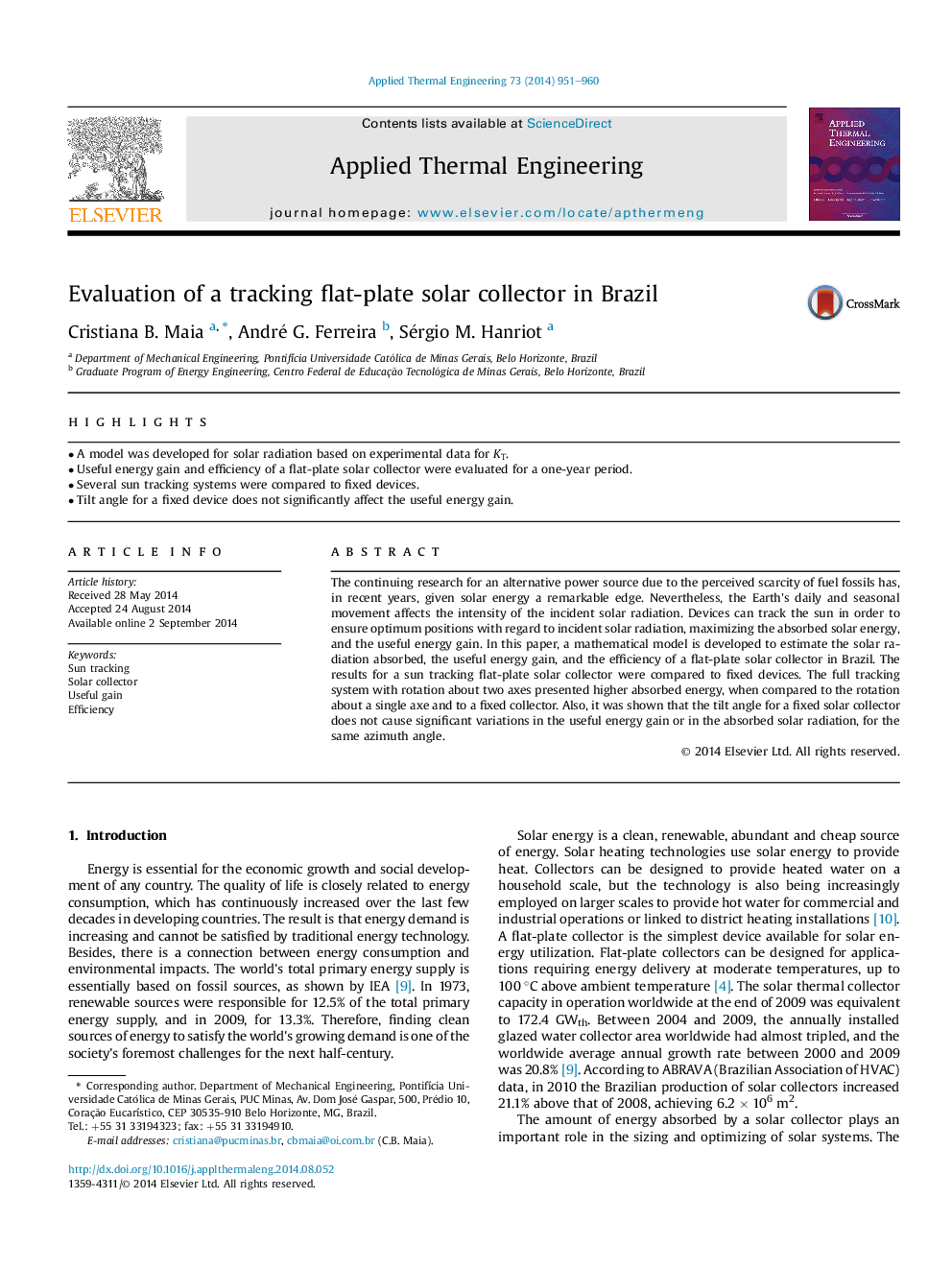| Article ID | Journal | Published Year | Pages | File Type |
|---|---|---|---|---|
| 645821 | Applied Thermal Engineering | 2014 | 10 Pages |
Abstract
The continuing research for an alternative power source due to the perceived scarcity of fuel fossils has, in recent years, given solar energy a remarkable edge. Nevertheless, the Earth's daily and seasonal movement affects the intensity of the incident solar radiation. Devices can track the sun in order to ensure optimum positions with regard to incident solar radiation, maximizing the absorbed solar energy, and the useful energy gain. In this paper, a mathematical model is developed to estimate the solar radiation absorbed, the useful energy gain, and the efficiency of a flat-plate solar collector in Brazil. The results for a sun tracking flat-plate solar collector were compared to fixed devices. The full tracking system with rotation about two axes presented higher absorbed energy, when compared to the rotation about a single axe and to a fixed collector. Also, it was shown that the tilt angle for a fixed solar collector does not cause significant variations in the useful energy gain or in the absorbed solar radiation, for the same azimuth angle.
Related Topics
Physical Sciences and Engineering
Chemical Engineering
Fluid Flow and Transfer Processes
Authors
Cristiana B. Maia, André G. Ferreira, Sérgio M. Hanriot,
